Table of content
Stir-fried shrimp tails, a dish beloved for its bold flavors and tantalizing aroma, is a cornerstone of many Asian cuisines. This culinary masterpiece combines the natural sweetness of shrimp with a medley of spices, aromatics, and sauces, resulting in a dish that is both visually stunning and irresistibly delicious. Whether you’re a seasoned home cook or a curious novice, mastering this recipe will elevate your cooking repertoire and impress even the most discerning palates. In this comprehensive guide, we’ll explore the intricacies of crafting the perfect stir-fried shrimp tails, from selecting the finest ingredients to executing precise cooking techniques.
The Allure of Stir-Fried Shrimp Tails
Stir-frying, a cooking method synonymous with Chinese cuisine, involves cooking ingredients over high heat in a minimal amount of oil while stirring continuously. This technique preserves the ingredients’ textures, colors, and nutrients, resulting in dishes that are vibrant, crisp, and bursting with flavor. Shrimp tails, in particular, offer a unique culinary experience—their tender meat absorbs flavors readily, while their shells, when cooked properly, add a subtle brininess and depth to the dish.
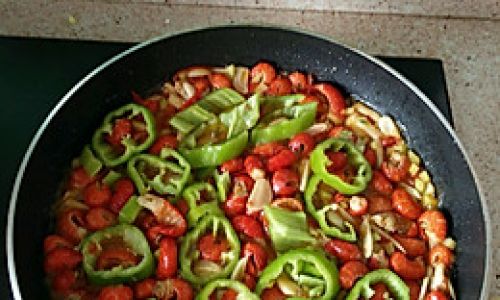
This recipe is not merely a meal; it’s a celebration of balance. The interplay between the shrimp’s sweetness, the heat of chili peppers, the umami richness of soy sauce, and the freshness of herbs creates a symphony of tastes that dance on the tongue. Additionally, its versatility allows for endless customization, making it a crowd-pleaser at dinner parties, a quick weeknight dinner, or even a gourmet addition to your lunchbox.
Ingredients: Building Blocks of Flavor
To embark on this culinary adventure, gather the following ingredients. Each component plays a pivotal role in shaping the dish’s character, so precision in selection and measurement is key.
Primary Ingredients
- Shrimp Tails (1 lb / 450g): Opt for fresh, medium-sized shrimp with their tails intact. If frozen, thaw them thoroughly and pat dry to prevent excess moisture during cooking.
- Aromatics:
- Garlic (4 cloves, minced): Adds a pungent, earthy note.
- Ginger (1 tbsp, grated): Imparts a warm, slightly peppery kick.
- Green Onions (3 stalks, sliced diagonally): Use both the white and green parts for layered flavor.
- Vegetables:
- Bell Peppers (1 cup, diced): A mix of red, yellow, and green peppers enhances color and sweetness.
- Onion (1 medium, thinly sliced): Caramelizes beautifully during stir-frying.
- Chili Peppers (2-3, depending on heat preference): Fresno or Thai bird’s eye chilies work well.
- Sauce Base:
- Soy Sauce (2 tbsp): Use low-sodium for better control over saltiness.
- Oyster Sauce (1 tbsp): Provides a rich, savory backbone.
- Hoisin Sauce (1 tsp): Adds a touch of sweetness and complexity.
- Rice Vinegar (1 tsp): Balances the dish with a hint of acidity.
- Thickening Agent:
Cornstarch (1 tsp): Mixed with water to create a slurry for glossy sauce.
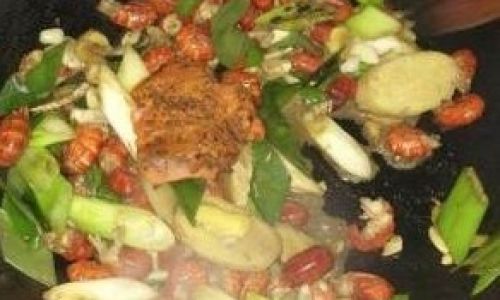
Optional Enhancements
- Sesame Oil (1 tsp): For a nutty aroma.
- Sugar (½ tsp): To amplify sweetness if desired.
- Shaoxing Wine (1 tbsp): A Chinese cooking wine that elevates umami.
- Cashews or Peanuts (¼ cup, toasted): Adds crunch and richness.
Preparation: The Foundation of Excellence
Before igniting the stove, meticulous preparation ensures a seamless cooking process and optimal flavor development.
Cleaning and Preparing the Shrimp
- Devein the Shrimp: Using a small paring knife, make a shallow cut along the back of each shrimp and remove the dark intestinal vein. Rinse under cold water.
- Marinate (Optional but Recommended): Toss the shrimp in a mixture of 1 tbsp soy sauce, 1 tsp cornstarch, and a pinch of white pepper. Marinate for 15-20 minutes to tenderize and infuse flavor.
Prepping the Aromatics and Vegetables
- Mince the Garlic and Ginger: Finely chop to ensure even distribution of flavor.
- Slice the Vegetables: Cut bell peppers and onions into uniform pieces for even cooking.
- Chili Preparation: Remove seeds for milder heat or leave intact for a fiery kick.
Crafting the Sauce
In a small bowl, whisk together the soy sauce, oyster sauce, hoisin sauce, rice vinegar, and cornstarch slurry (1 tsp cornstarch + 2 tbsp water). This pre-mixed sauce streamlines the cooking process and prevents overcooking ingredients.
Cooking Process: The Dance of Fire and Flavor
Stir-frying is a dynamic technique that demands focus and speed. Follow these steps to achieve perfection.
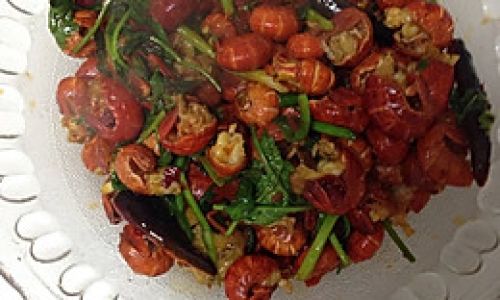
Heating the Wok or Skillet
- Wok Advantage: A carbon-steel wok is ideal for its ability to retain and distribute heat evenly. If unavailable, a large stainless-steel skillet works well.
- High Heat: Preheat the wok over medium-high to high heat until a drop of water evaporates instantly. Add 2 tbsp of vegetable oil (peanut or canola) and swirl to coat.
Stir-Frying the Aromatics
- Sear the Aromatics: Add the garlic, ginger, and white parts of the green onions to the hot oil. Stir-fry for 30 seconds until fragrant but not browned.
- Avoid Burning: Keep ingredients moving to prevent scorching, which imparts bitterness.
Cooking the Shrimp
- Add Shrimp: Introduce the shrimp to the wok, spreading them in a single layer. Cook for 1-2 minutes per side until they turn pink and opaque. Overcooking results in rubbery texture.
- Remove and Set Aside: Transfer the shrimp to a plate to prevent overcooking.
Sautéing the Vegetables
- Vegetable Medley: Add the onions, bell peppers, and chilies to the wok. Stir-fry for 3-4 minutes until slightly softened but still crisp.
- Deglaze (Optional): Splash a tbsp of Shaoxing wine into the wok, scraping up any browned bits for added flavor.
Reuniting Shrimp and Sauce
- Return Shrimp: Add the cooked shrimp back to the wok, tossing gently with the vegetables.
- Pour Sauce: Drizzle the pre-mixed sauce over the ingredients. Stir vigorously for 1-2 minutes until the sauce thickens and coats everything evenly.
- Adjust Seasoning: Taste and add a pinch of sugar or a splash of soy sauce if needed.
Final Flourish
- Add Herbs and Nuts: Fold in the green parts of the green onions and toasted cashews (if using).
- Drizzle Sesame Oil: A final drizzle of sesame oil just before serving enhances the dish’s fragrance.
Serving Suggestions: Elevating the Experience
Stir-fried shrimp tails shine when paired with complementary textures and flavors.
- Rice or Noodles: Serve over steamed jasmine rice, fried rice, or chow mein noodles to soak up the sauce.
- Garnishes: A sprinkle of toasted sesame seeds, fresh cilantro, or a lime wedge adds brightness.
- Beverage Pairing: Pair with a crisp lager, a lightly oaked Chardonnay, or jasmine tea to cleanse the palate.
Tips for Culinary Mastery
- Wok Temperature: Maintain high heat throughout cooking to achieve the coveted “wok hei” (breath of the wok), which imparts a smoky, charred flavor.
- Ingredient Dryness: Ensure shrimp and vegetables are pat-dried to prevent steaming instead of stir-frying.
- Timing is Key: Prepare all ingredients beforehand—stir-frying happens too quickly for mid-cooking prep.
- Customization: Experiment with vegetables like snap peas, mushrooms, or baby corn. For a protein twist, add diced chicken or tofu.
- Dietary Adaptations: Use tamari for gluten-free diets or honey instead of sugar for a Paleo-friendly version.
Troubleshooting Common Pitfalls
- Soggy Shrimp: Overcrowding the wok lowers the temperature, leading to steaming. Cook in batches if necessary.
- Bland Flavor: Ensure the sauce is adequately seasoned and the shrimp are marinated.
- Burnt Aromatics: Reduce heat if the garlic or ginger browns too quickly.
The Science Behind the Sizzle
Understanding the culinary chemistry at play can elevate your dish from good to extraordinary.
- Maillard Reaction: The high-heat searing of shrimp and vegetables triggers this reaction, creating complex flavors and aromas.
- Emulsification: The cornstarch slurry acts as an emulsifier, binding the sauce’s components for a glossy finish.
- Umami Synergy: The combination of soy sauce, oyster sauce, and shrimp amplifies umami, the fifth taste, making the dish deeply satisfying.
Cultural Context: A Dish with Roots
Stir-fried shrimp tails trace their lineage to Cantonese and Sichuan cuisine, where seafood is celebrated for its versatility. In coastal regions, fresh shrimp is abundant, making this dish a staple. Over time, it has transcended borders, with chefs worldwide adding local twists—think Thai basil, Korean gochujang, or Mediterranean herbs.

Conclusion: A Culinary Triumph
Stir-fried shrimp tails are more than a recipe; they’re a testament to the joy of cooking. Each step—from marinating the shrimp to the final sizzle of the sauce—is an act of love, a dialogue between cook and ingredient. Whether you’re hosting a feast or craving a solo indulgence, this dish delivers on promise: bold flavors, textural contrast, and the satisfaction of creating something extraordinary from humble elements.
So, don your apron, heat the wok, and let the symphony of sizzling shrimp and spices fill your kitchen. With practice, this recipe will become a cherished part of your culinary identity—a reminder that great food is not just eaten but experienced, shared, and remembered. Happy cooking!



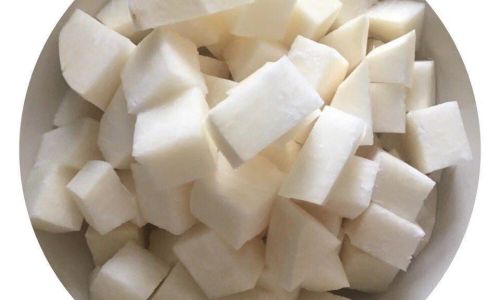
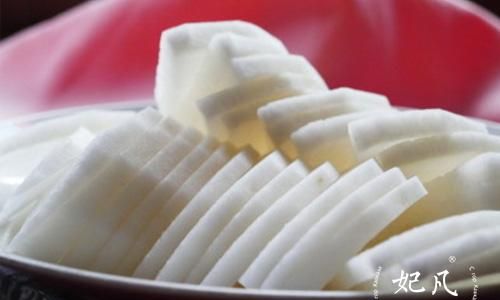
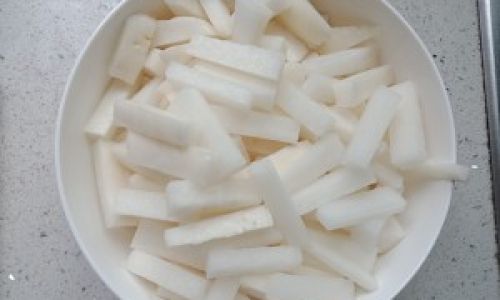
0 comments